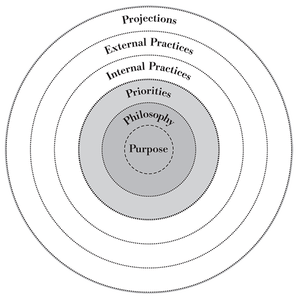 Sheila Margolis helps leaders build a culture that engages employees, retains top talent, and prospers. She is a culture and employee engagement expert. Sheila holds a doctoral degree in Human Resource Development and is President of Workplace Culture Institute. Sheila conducts culture assessments and employee engagement surveys and is the author of four books on organizational culture and change: Building a Culture of Distinction: Facilitator Guide for Defining Organizational Culture and Managing Change and the Participant Workbook, the business parable There Is No Place Like Work, and Job Seeker Manual for evaluating a workplace for culture fit. Sheila is a professional member of the National Speakers Association and speaks regularly at corporate and professional meetings and conferences. To learn more about Sheila, go to www.SheilaMargolis.com.
Sheila Margolis helps leaders build a culture that engages employees, retains top talent, and prospers. She is a culture and employee engagement expert. Sheila holds a doctoral degree in Human Resource Development and is President of Workplace Culture Institute. Sheila conducts culture assessments and employee engagement surveys and is the author of four books on organizational culture and change: Building a Culture of Distinction: Facilitator Guide for Defining Organizational Culture and Managing Change and the Participant Workbook, the business parable There Is No Place Like Work, and Job Seeker Manual for evaluating a workplace for culture fit. Sheila is a professional member of the National Speakers Association and speaks regularly at corporate and professional meetings and conferences. To learn more about Sheila, go to www.SheilaMargolis.com.
What does organizational culture mean to you?
Organizational culture is the Five Ps of an organization: its Purpose, Philosophy, Priorities, Practices, and Projections. As the Five Ps illustrates, culture consists of its shared principles and values (Purpose, Philosophy, and Priorities), employee practices with each other and with those outside the organization (Practices), and its organizational images (Projections).

[Taken from Building a Culture of Distinction: Facilitator Guide for Defining Organizational Culture and Managing Change (2010), Sheila L. Margolis, Workplace Culture Institute.]
To understand the Five Ps, begin at the center or core of the organization: the Purpose. Purpose is the fundamental reason why the organization exists. It is why the work of the organization is important.
Outside of Purpose is the organization’s Philosophy. Philosophy is the core, distinctive, and enduring principles or values that have guided the organization over the years. The Philosophy directs how employees distinctively do their work. These are the principles or values that, if changed, would make the organization feel like a different place.
The Purpose and the Philosophy are the identity of the organization. They are the principles and values that are stable over time and what loyal employees and customers are committed and connected to. Successful organizations understand and preserve this identity.
The next layer outside of the Purpose and Philosophy is Priorities. Priorities are the additional principles or values that the organization must focus on and pay attention to in order to thrive. Priorities can change based on the needs of the organization as it adapts to a changing environment.
There are two types of Priorities: strategic and universal. Strategic Priorities are external, customer focused. They guide the organization so it can achieve its strategic goals. Universal Priorities are internal, employee focused. They guide the organization so it can have a more engaged workforce.
These central three Ps—the Purpose, Philosophy, and Priorities—are the organization’s Core Culture. These Core Culture principles and values guide organizational practices and the images that the organization projects to the public. Understanding culture and effectively managing it depends on understanding the organization’s shared principles and values.
Next, outside of Core Culture is the organization’s Practices and Projections.
Practices are both Internal and External. Practices are rooted in principles and values. The Internal Practices are the behaviors of employees that affect employee-to-employee interactions. Internal Practices consist of things like the way the organization is structured, how work is designed, how one does one’s job, and the systems and processes for doing work; hiring and onboarding practices; training and development; performance management; communication; and technology used to get work done. External Practices—one layer outside of Internal Practices—are the practices with others outside the organization. External Practices consist of the markets the organization serves; its customers; the products and services it provides; and its suppliers/vendors and business partners. In healthy organizations, both Internal Practices and External Practices are aligned with the principles and values of the Core Culture.
The final layer of the Five Ps is Projections. Projections are the images the organization projects to the public through things like the organization’s name, logo, and symbols; the location of its headquarters; the image of its leader; the design and appearance of its offices and stores; employees’ dress or uniforms; marketing, public relations, and advertising; and community activities. Similar to Practices, in a healthy organization, Projections are aligned with the Core Culture.
The Five Ps–Purpose, Philosophy, Priorities, Practices, and Projections – offers a unique and simple way to understand the culture, manage change, and build alignment throughout the organization.
What are the major determinants of organizational culture?
The Purpose and the Philosophy are typically derived from the founder of the organization or the principles and ideals that were part of the organization’s creation. Strategic Priorities result from the organization’s strategy—typically, decided by top leadership. If leadership understands the importance of increasing employee engagement, then, the key driver results from an employee engagement survey influence the universal Priorities.
In healthy organizations, these Core Culture principles and values guide the organization’s Practices and Projections. But in organizations without a clearly defined or shared Core Culture, employees’ and leaders’ behaviors can vary throughout the organization, resulting in a collection of subcultures—each potentially defined by a different Core Culture. Leadership can manage culture, but employees’ actions—in alignment or out of alignment with the Core Culture—determine the strength of the culture and the consistency of the employee and customer experience.
What is the role of employees in organizational culture?
The role of employees in organizational culture is to understand and value the Core Culture of their organization and to live those principles and values each and every day. Employees who are typically the most effective in this are those who view the Core Culture as meaningful and who feel a sense of harmony with its principles and values. Therefore, employees must evaluate their fit with a culture—preferably prior to being hired—in order to determine if the workplace is the right place for them.
What are the common problems associated with managing organizational culture?
Effectively managing culture requires having a defined Core Culture that is communicated regularly, and shared, valued, and practiced by leaders and employees. Managing culture requires an ongoing focus on aligning all actions with the Core Culture. If a set of Core Culture principles and values are not shared and practiced, then the organization will suffer. There will be inconsistency and difficulty in achieving organizational goals. Some leaders do not understand the importance of defining and communicating the Core Culture and integrating those principles and values throughout the organization.
Leaders also must integrate change in their culture if a change is needed for the organization to thrive. A common problem is when leaders change the Purpose or the Philosophy rather than integrating new Priorities into the Core Culture. Tampering with the organization’s identity can have detrimental effects on employee and customer loyalty and engagement.
Also, when an organization has new leadership, there is an opportunity for culture change. Again, the new leader should preserve the identity and initiate change through new Priorities and alignment of the Five Ps. Not understanding what to preserve and what to change is a key problem when managing culture and change.
What are the ways to innovate company culture? Any best practices to share.
The ways to innovate or change organizational culture are through Priorities. By embedding new Priorities—both strategic and universal—into the Core Culture and then encouraging alignment with these new principles and values, organizations can bring change to the culture.
Often, the most important change an organization needs is to be better at being who it says it is—its identity. Rarely will an organization need to change its Purpose or Philosophy in order to thrive.

1 thoughts on “Sheila Margolis, President, Workplace Culture Institute”